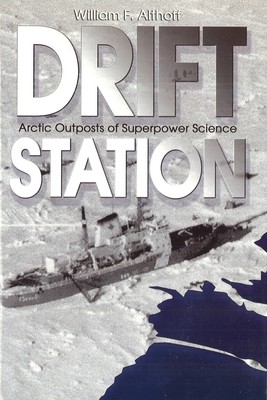
- We will send in 10–14 business days.
- Author: William F Althoff
- Publisher: Potomac Books
- Year: 2007
- Pages: 320
- ISBN-10: 1574887718
- ISBN-13: 9781574887716
- Format: 16.2 x 22.7 x 3.3 cm, hardcover
- Language: English
- SAVE -10% with code: EXTRA
Reviews
Description
Closed to conventional passage, the Arctic Ocean and peripheral seas have nevertheless known European explorers since the sixteenth century. Systematic observation, however, dates only from the last years of the nineteenth century, with the epic drift of Fridtjof Nansen's ice ship Fram (1893-1896), the first scientific expedition of the modern era. Twentieth-century technology--the icebreaker, radio transmission, nuclear power, and aircraft--opened the Arctic for survey, basic research, and observation. World War II saw the inhospitable circumpolar Arctic transformed into a theater of military operations.
The Cold War and the missile age saw governments staking further claims, because only a relatively short arc of maritime boreal waste separated North America and Eurasia. The complex interactions of air, ice, and water that drive circumpolar systems also serve as engines of oceanic and atmospheric circulation. As a result, meteorology, oceanography, geophysics, and many other areas of scientific research in the region soon became acutely linked to the economic, political, and particularly the politico-military interests of the Soviet Union, the United States, Canada, and the other Arctic nations. In response, both superpowers established "drift stations"--that is, isolated camps based on nomadic ice floes--to conduct crucial scientific research. During the Cold War, they were the objects of suspicion, particularly the Soviet stations, which often stood accused as bases for espionage. Today, with the world's climate system and global warming under study, Russian expertise, data, geography, and stewardship are crucial to the world community.EXTRA 10 % discount with code: EXTRA
The promotion ends in 20d.02:37:41
The discount code is valid when purchasing from 10 €. Discounts do not stack.
- Author: William F Althoff
- Publisher: Potomac Books
- Year: 2007
- Pages: 320
- ISBN-10: 1574887718
- ISBN-13: 9781574887716
- Format: 16.2 x 22.7 x 3.3 cm, hardcover
- Language: English English
Closed to conventional passage, the Arctic Ocean and peripheral seas have nevertheless known European explorers since the sixteenth century. Systematic observation, however, dates only from the last years of the nineteenth century, with the epic drift of Fridtjof Nansen's ice ship Fram (1893-1896), the first scientific expedition of the modern era. Twentieth-century technology--the icebreaker, radio transmission, nuclear power, and aircraft--opened the Arctic for survey, basic research, and observation. World War II saw the inhospitable circumpolar Arctic transformed into a theater of military operations.
The Cold War and the missile age saw governments staking further claims, because only a relatively short arc of maritime boreal waste separated North America and Eurasia. The complex interactions of air, ice, and water that drive circumpolar systems also serve as engines of oceanic and atmospheric circulation. As a result, meteorology, oceanography, geophysics, and many other areas of scientific research in the region soon became acutely linked to the economic, political, and particularly the politico-military interests of the Soviet Union, the United States, Canada, and the other Arctic nations. In response, both superpowers established "drift stations"--that is, isolated camps based on nomadic ice floes--to conduct crucial scientific research. During the Cold War, they were the objects of suspicion, particularly the Soviet stations, which often stood accused as bases for espionage. Today, with the world's climate system and global warming under study, Russian expertise, data, geography, and stewardship are crucial to the world community.

Reviews